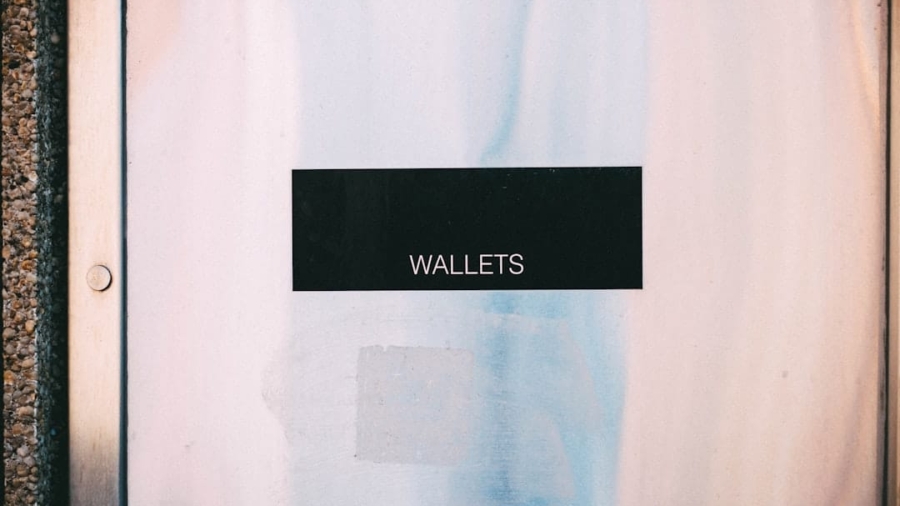Multi-signature wallets, often referred to as multi-sig wallets, represent a significant advancement in the realm of cryptocurrency security. Unlike traditional wallets that require a single private key for access, multi-signature wallets necessitate multiple keys to authorize a transaction. This feature is particularly beneficial for organizations or groups that require a higher level of security and accountability.
By distributing the control of funds across several parties, multi-signature wallets mitigate the risks associated with single points of failure, such as lost keys or unauthorized access. The concept of multi-signature technology is rooted in the principles of cryptography and distributed systems. Each participant in a multi-signature wallet holds a unique private key, and a predefined number of these keys must be used to sign off on any transaction.
This setup can be customized according to the needs of the users; for instance, a 2-of-3 multi-signature wallet would require two out of three keys to authorize a transaction. This flexibility allows for various configurations, making multi-signature wallets suitable for different use cases, from personal savings to corporate treasury management.
Key Takeaways
- Multi-signature wallets require multiple signatures to authorize a transaction, providing added security and control.
- Multi-signature wallets work by requiring a predetermined number of signatures from a group of authorized individuals or devices to approve a transaction.
- Investors benefit from multi-signature wallets by reducing the risk of unauthorized transactions and increasing security for their digital assets.
- Potential risks of using multi-signature wallets include the complexity of managing multiple signatures and the risk of losing access if key holders are unavailable.
- Best practices for using multi-signature wallets include carefully selecting key holders, regularly updating security protocols, and implementing a backup plan for accessing funds.
How Multi-Signature Wallets Work
The operational mechanics of multi-signature wallets hinge on cryptographic algorithms that facilitate secure transactions. When a user initiates a transaction from a multi-signature wallet, the wallet generates a unique transaction request that includes the details of the transfer and the public keys associated with the required signatories. The transaction remains pending until the requisite number of signatures is collected.
Each signatory uses their private key to sign the transaction, which is then aggregated into a single transaction that can be broadcasted to the blockchain. To illustrate this process, consider a scenario involving three partners who manage a business fund through a 2-of-3 multi-signature wallet. When one partner proposes a withdrawal, they create a transaction request that is sent to the other two partners for approval.
Each partner reviews the request and, if they agree, signs it with their private key. Once two signatures are collected, the transaction is executed on the blockchain. This collaborative approach not only enhances security but also fosters transparency and trust among participants, as all parties must agree before any funds can be moved.
Benefits of Multi-Signature Wallets for Investors

Investors stand to gain significantly from utilizing multi-signature wallets due to their enhanced security features. One of the primary advantages is the reduction of risk associated with theft or loss of private keys. In traditional wallets, if an individual loses their private key or it falls into the wrong hands, they may lose access to their funds permanently.
Multi-signature wallets distribute this risk by requiring multiple keys for access, making it considerably more difficult for malicious actors to gain control over the assets. Moreover, multi-signature wallets provide an added layer of accountability and governance, which is particularly valuable for investment groups or organizations managing pooled funds. By requiring multiple approvals for transactions, these wallets ensure that no single individual can unilaterally make decisions regarding fund disbursement.
This structure not only protects against fraud but also encourages collaborative decision-making among stakeholders, aligning with best practices in corporate governance and financial management.
Potential Risks of Using Multi-Signature Wallets
Despite their numerous advantages, multi-signature wallets are not without risks. One significant concern is the complexity involved in managing multiple keys. If one key is lost or becomes inaccessible due to technical issues or personal circumstances, it can jeopardize access to the funds stored in the wallet.
For example, in a 2-of-3 setup, if one partner loses their key and another is unavailable to sign off on transactions, the remaining partner may find themselves unable to access their assets. Additionally, while multi-signature wallets enhance security against unauthorized access, they can also introduce vulnerabilities if not properly managed. For instance, if all signatories are not vigilant about securing their private keys or if they use weak passwords, the wallet could still be compromised.
Furthermore, the complexity of setting up and maintaining a multi-signature wallet may deter less technically savvy users from adopting this technology, potentially leading to misconfigurations that could expose funds to risk.
Best Practices for Using Multi-Signature Wallets
To maximize the benefits of multi-signature wallets while minimizing potential risks, users should adhere to several best practices. First and foremost, it is crucial to establish clear protocols for key management among all signatories. This includes securely storing private keys in hardware wallets or other secure environments and ensuring that all participants understand their responsibilities regarding key security.
Regularly updating security measures and conducting audits can also help identify vulnerabilities before they can be exploited. Another important practice is to implement a robust recovery plan in case of lost keys or other emergencies. This could involve creating backup copies of keys stored in secure locations or using trusted third-party services that specialize in key recovery solutions.
Additionally, users should consider setting up multi-signature wallets with varying configurations based on their specific needs; for example, using a 3-of-5 setup for larger groups can provide greater flexibility while still maintaining security.
Comparing Multi-Signature Wallets to Traditional Wallets

When comparing multi-signature wallets to traditional single-key wallets, several key differences emerge that highlight the advantages and disadvantages of each approach. Traditional wallets are straightforward and user-friendly; they allow individuals to manage their cryptocurrency with minimal complexity. However, this simplicity comes at a cost—single-key wallets are inherently more vulnerable to theft and loss since possession of the private key equates to control over the funds.
In contrast, multi-signature wallets offer enhanced security through their requirement for multiple signatures. This added layer of protection makes them particularly appealing for businesses and investment groups where multiple stakeholders are involved in financial decisions. However, this complexity can also be a drawback; users must navigate the intricacies of key management and transaction approvals, which may deter some individuals from adopting this technology.
Ultimately, the choice between traditional and multi-signature wallets depends on individual needs and risk tolerance.
Implementing Multi-Signature Wallets in Investment Strategies
Incorporating multi-signature wallets into investment strategies can significantly enhance security and governance for both individual investors and organizations. For investment clubs or groups pooling resources for collective investments, using a multi-signature wallet ensures that all members have a say in financial decisions while safeguarding against unauthorized transactions. This collaborative approach aligns with principles of shared responsibility and transparency, fostering trust among participants.
Moreover, institutional investors can leverage multi-signature wallets as part of their broader risk management strategies. By requiring multiple approvals for large transactions or fund reallocations, organizations can implement checks and balances that prevent fraud and mismanagement.
Future Trends and Developments in Multi-Signature Wallet Technology
As cryptocurrency continues to evolve, so too will the technology surrounding multi-signature wallets. One emerging trend is the integration of advanced cryptographic techniques such as threshold signatures and decentralized identity solutions. These innovations aim to enhance both security and usability by allowing users to create more flexible signing arrangements without compromising on safety.
Furthermore, as regulatory frameworks around cryptocurrencies become more defined, we may see increased adoption of multi-signature wallets among institutional investors seeking compliance with legal requirements regarding fund management and reporting. The growing emphasis on cybersecurity will likely drive further developments in multi-signature technology as well, leading to more user-friendly interfaces and improved key management solutions that cater to both novice and experienced users alike. In conclusion, multi-signature wallets represent a pivotal advancement in cryptocurrency security and governance.
Their ability to distribute control among multiple parties not only enhances protection against unauthorized access but also fosters collaborative decision-making among stakeholders. As technology continues to advance and user needs evolve, multi-signature wallets are poised to play an increasingly vital role in shaping the future landscape of digital asset management.
In the realm of digital security, particularly for investors, multi-signature wallets have emerged as a robust solution to enhance security measures. These wallets require multiple private keys to authorize a transaction, significantly reducing the risk of unauthorized access.
This method integrates online and offline shopping experiences, ensuring convenience and security for consumers. To delve deeper into how BOPIS works and its benefits, you can read more in the article What is BOPIS and How Does it Work?. This approach, much like multi-signature wallets, highlights the importance of integrating technology to enhance user experience and security.
FAQs
What is a multi-signature wallet?
A multi-signature wallet is a type of cryptocurrency wallet that requires multiple private keys to authorize a transaction. This adds an extra layer of security compared to traditional single-signature wallets.
How does a multi-signature wallet enhance security for investors?
Multi-signature wallets enhance security for investors by requiring multiple parties to approve a transaction, reducing the risk of unauthorized or fraudulent activity. This can help protect against theft, hacking, and insider threats.
What are the potential drawbacks of using a multi-signature wallet?
While multi-signature wallets offer enhanced security, they can also be more complex to set up and manage compared to single-signature wallets. Additionally, if one of the required signatories becomes unavailable, it can potentially delay or prevent transactions from being authorized.
Are multi-signature wallets commonly used in the cryptocurrency industry?
Yes, multi-signature wallets are commonly used in the cryptocurrency industry, especially by institutional investors, exchanges, and other entities that require heightened security measures for their digital assets.
Can multi-signature wallets be used for any type of cryptocurrency?
Multi-signature wallets can be used for a wide range of cryptocurrencies, including Bitcoin, Ethereum, and many others. However, the specific implementation and compatibility may vary depending on the cryptocurrency and wallet provider.

